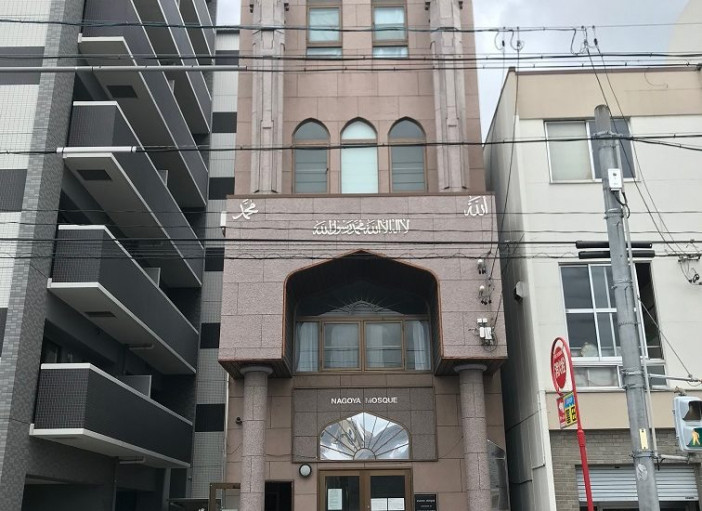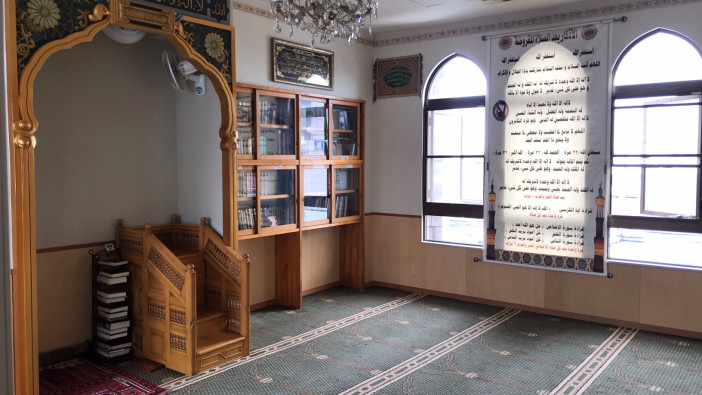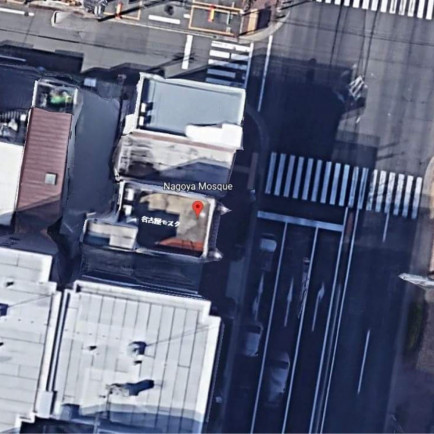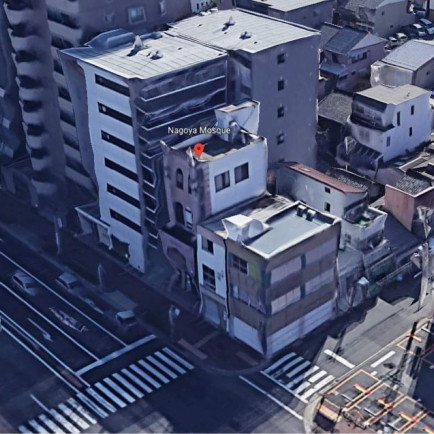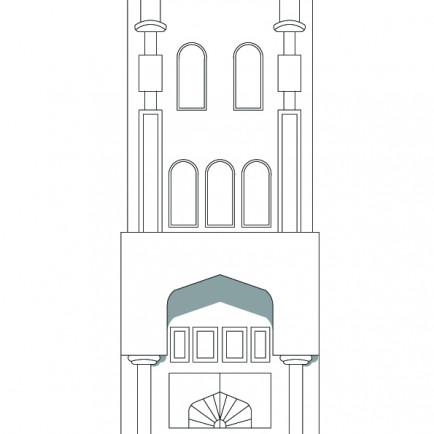Nagoya Mosque
History
According to "History of Islamic Japan" (written by Fujio Komura, Japan Islamic Friendship Federation), in 1926, 10 Tatar-Turkish families who were deprived of religious freedom in Russia moved to Nagoya, and they moved to Nagoya in March 1931. It is said that the "Islamic Religion" was formed, and the residence of Mr. Sidegariev, who is in charge of accounting, was used as a place of worship, and worship was held every Friday and five times a day. This is the first Musalla to be recorded.
"Nagoya Muslim Mosque-Commemorative Booklet Issued at the Opening Ceremony-" (published by the Islamic Church of Tatar, Nagoya, January 1937) received donations from Muslims living in India and Manchuria in November 1936, Nagoya. It is written that a new building was built in 3-chome, Imaike-cho, Nagoya, and the opening ceremony was held in January of the following year. The mosque, which was built with wooden mortar on a land of about 40 m2, had an entrance two steps up the stone steps from the road, a place of worship on the first floor, and a school for Turkish children on the second floor.
On May 14, 1945, the mosque was burned down by the air raids on the U.S. military aircraft B26, and the land that became a burnt field was directly named by Mr. Hamidrin, who is named as the chairman of the mosque construction committee in the above booklet, with the Japanese next door. It was negotiated and sold.
Urban and Architectural
According to “日本イスラーム史” (nihon Islamu-shi), written by Fujio Komura, published by 日本イスラーム友好連盟 (nihon Islamu-yuko-renmei), the first ever place of worship for Muslims in Japan was in Nagoya. It is reported that this was established by a group of Muslims in Nagoya that formed a group, 名古屋回教徒団 (Nagoya kaikyo-kyoudan), in March 1931.
In 1936, they then proceed to building a 2story wooden mortar Masjid in what is now Chikusa-ku, Nagoya. However, it burns down during the WW2, and since then, Nagoya did not see a Masjid for around 50 years.
In the 1980s, the number of foreign born Muslims in Nagoya increases. Upon feeling the necessity of a place of worship, volunteers rented a room in an apartment making the Friday prayer possible in congregation.
Amongst these foreign Muslims, many started to get married locally with the Japanese, naturally making them consider to permanently settle in the region. Fund-raising started and a land was successfully purchased. After 50 years, a Masjid was back in Nagoya.
The Inauguration Ceremony of Nagoya Mosque was held in July 1998. The Imam of Masjid al-Haram from the Holy City of Mecca, as well as the Ambassador of The Kingdom of Saudi Arabia to Japan, and many others attended the event.
Since then, the Masjid has served as a place of worship for the five daily prayers as well as the Friday prayers as well. On Saturdays and Sundays, various gathering such as study groups and women’s gathering, take place in the Masjid. It has also become the place where Muslims within Nagoya and around can come to exchange information and seek advice on their new lives in the country.
In 2002, after Kobe and Tokyo, Nagoya Mosque became the third Masjid in Japan to be recognized by the government as an official religious organization. The Masjid has since been striving to support the foreign born Muslims as well as the growing population of Japanese Muslims.
Description
The first place of worship in Islam in Japan was in Nagoya. There is a record that the mosque was established by the "Nagoya Kaikyodan" formed in March 1931.
After that, in November 1936, a two-story wooden mortar mosque was erected in the present Chikusa Ward, Nagoya City, but it was destroyed by fire during World War II. Since then, there has been no mosque in Nagoya for about 50 years
Details
Location
2-26-7 Honjindori, Nakamura-ku, Nagoya, Aichi, Japan
Worshippers
300
Owners
Islamic Center of Nagoya
Year of Build
1998
Area
617 Square meter
Drawings
Map
History
According to "History of Islamic Japan" (written by Fujio Komura, Japan Islamic Friendship Federation), in 1926, 10 Tatar-Turkish families who were deprived of religious freedom in Russia moved to Nagoya, and they moved to Nagoya in March 1931. It is said that the "Islamic Religion" was formed, and the residence of Mr. Sidegariev, who is in charge of accounting, was used as a place of worship, and worship was held every Friday and five times a day. This is the first Musalla to be recorded.
"Nagoya Muslim Mosque-Commemorative Booklet Issued at the Opening Ceremony-" (published by the Islamic Church of Tatar, Nagoya, January 1937) received donations from Muslims living in India and Manchuria in November 1936, Nagoya. It is written that a new building was built in 3-chome, Imaike-cho, Nagoya, and the opening ceremony was held in January of the following year. The mosque, which was built with wooden mortar on a land of about 40 m2, had an entrance two steps up the stone steps from the road, a place of worship on the first floor, and a school for Turkish children on the second floor.
On May 14, 1945, the mosque was burned down by the air raids on the U.S. military aircraft B26, and the land that became a burnt field was directly named by Mr. Hamidrin, who is named as the chairman of the mosque construction committee in the above booklet, with the Japanese next door. It was negotiated and sold.
Urban and Architectural
According to “日本イスラーム史” (nihon Islamu-shi), written by Fujio Komura, published by 日本イスラーム友好連盟 (nihon Islamu-yuko-renmei), the first ever place of worship for Muslims in Japan was in Nagoya. It is reported that this was established by a group of Muslims in Nagoya that formed a group, 名古屋回教徒団 (Nagoya kaikyo-kyoudan), in March 1931.
In 1936, they then proceed to building a 2story wooden mortar Masjid in what is now Chikusa-ku, Nagoya. However, it burns down during the WW2, and since then, Nagoya did not see a Masjid for around 50 years.
In the 1980s, the number of foreign born Muslims in Nagoya increases. Upon feeling the necessity of a place of worship, volunteers rented a room in an apartment making the Friday prayer possible in congregation.
Amongst these foreign Muslims, many started to get married locally with the Japanese, naturally making them consider to permanently settle in the region. Fund-raising started and a land was successfully purchased. After 50 years, a Masjid was back in Nagoya.
The Inauguration Ceremony of Nagoya Mosque was held in July 1998. The Imam of Masjid al-Haram from the Holy City of Mecca, as well as the Ambassador of The Kingdom of Saudi Arabia to Japan, and many others attended the event.
Since then, the Masjid has served as a place of worship for the five daily prayers as well as the Friday prayers as well. On Saturdays and Sundays, various gathering such as study groups and women’s gathering, take place in the Masjid. It has also become the place where Muslims within Nagoya and around can come to exchange information and seek advice on their new lives in the country.
In 2002, after Kobe and Tokyo, Nagoya Mosque became the third Masjid in Japan to be recognized by the government as an official religious organization. The Masjid has since been striving to support the foreign born Muslims as well as the growing population of Japanese Muslims.
Description
The first place of worship in Islam in Japan was in Nagoya. There is a record that the mosque was established by the "Nagoya Kaikyodan" formed in March 1931.
After that, in November 1936, a two-story wooden mortar mosque was erected in the present Chikusa Ward, Nagoya City, but it was destroyed by fire during World War II. Since then, there has been no mosque in Nagoya for about 50 years


